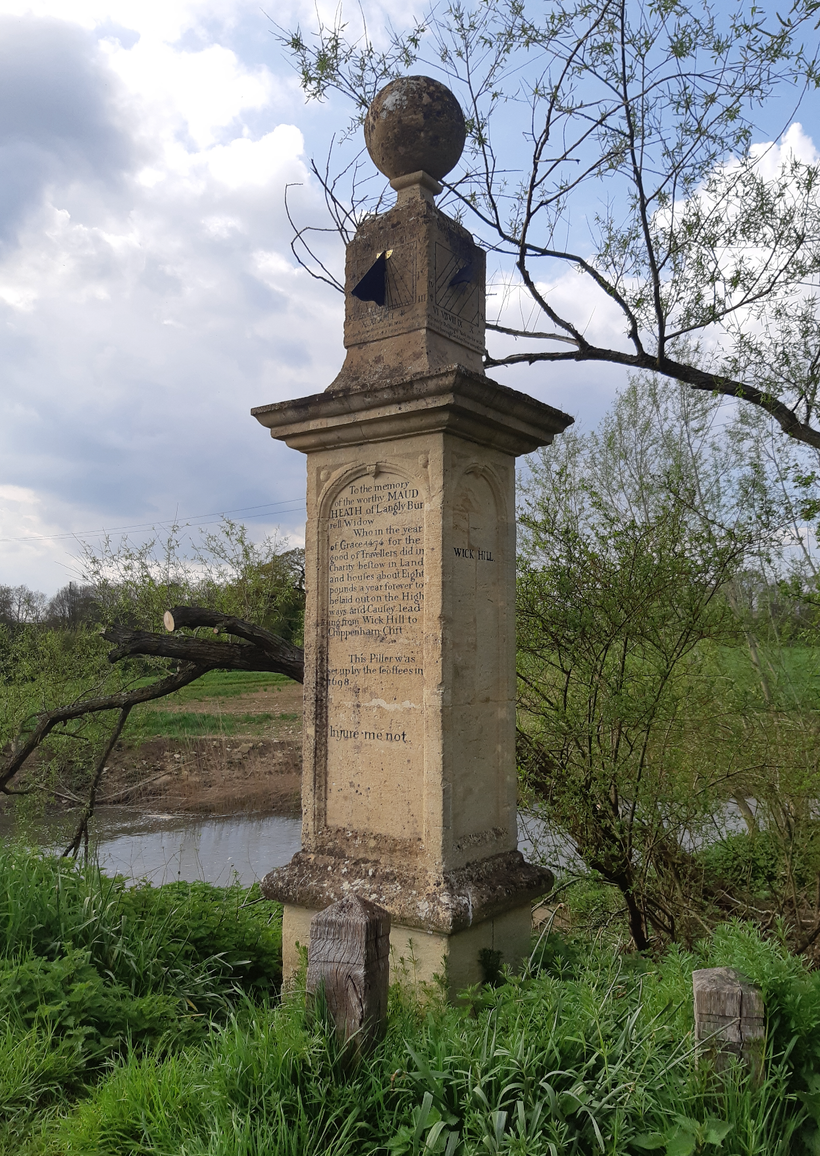
Within the city of Bristol lie seven cemeteries, two of which are sprawling, Victorian realms. The largest, Arnos Vale, opened in 1839 and Greenbank followed shortly afterwards in 1871.
Relatively speaking, Greenbank is a large Victorian Garden cemetery, but like so many others, has suffered from years of neglect. Today, it is mostly visited by mourners and nearby families who occasionally picnic on its slopes, rather than having a wider public draw. Curiously, the old notice board commanding that ‘no children admitted, unless under the care of responsible persons,’ still hangs damaged on the gates, long-ignored by visitors.

Due to its location, further from the centre of Bristol, there are few passing tourists and workers who would rest there on their dinner break. While the cemetery is in possession of a chapel, it has been disused for many years and has no central hub from which events, information or tours (which have become a popular feature in many large cemeteries across the world) may be conducted.
Nevertheless, Greenbank is a fascinating cemetery that holds all walks of life within its boundaries; from wartime civilian deaths to elaborate Victorian mausoleums and contemporary burials, it holds the story of a city within a few small acres.

Located near to Stapleton Road, Greenbank’s cemetery gates open directly onto winding paths, flanked by elaborate 19thcentury headstones and raised family vaults with statues that tower over passers-by. Originally established as an out-parish of St. Philips in 1871, the cemetery was extended twice – first in 1880, then again in 1899.

Two of the most famous interments are war heroes, neither of which have graves that are a dominating presence within cemetery grounds. These are namely, Frederick George Room 1895-1932 and Antonio Williams 1825-1908 and appear to be the only two interments celebrated in online coverage of Greenbank.
Frederick George Room was a Victoria Cross recipient who received his commendation for gallantry in the battlefield.
As explained by John Griffith,
‘During a German attack at Frezenberg, Belgium, August 16, 1917, when the company which was in the forward line had many casualties, Lance-Corporal Room was in charge of the stretcher-bearers. He worked under intense fire, dressing the wounded and with complete disregard for his own life, he showed unremitting devotion to his duties. For gallantry in the face of the enemy, he was awarded the Victoria Cross Medal.’[1]
Antonio Williams was a seaman in the United States Navy and was awarded the US Navy Peacetime Congressional Medal of Honor.
‘He was awarded the Medal of Honor for his bravery on November 24, 1877, which his citation read simply “For courage and fidelity displayed in the loss of the USS Huron”. His ship, the steam gunboat “USS Huron”, had been driven aground on November 23, 1877 off the coast of Nag’s Head, North Carolina by heavy weather after departing from Virginia on a scientific cruise of the coast of Cuba. Early in the morning of November 24, after the crew had made efforts to free her, the weather and sea worsened, the ship overturned, and 98 members of the officers and crew perished. Seaman Williams left the ship, going into the dangerous waves to run a safety line to the shore. Despite being bruised, batter and nearly drowned, when his small life raft capsized four times, he managed to pull four of his fellow crew members out of the churning sea when the vessel finally overturned. He was awarded the CMOH in 1879 for his efforts to try and save the ship and crew. After he was discharged in 1891 he moved to Bristol, England, where his wife was from and where he resided until his death in 1908. Today the wreck of the “USS Huron” lies 250 yards from the Nag’s Head beach, and is a protected wreck site on the National Register of Historic Places.’[2]

To have a small guide to notable interments would make a wonderful companion for any future visitors – one can only hope, that with the right funding, such an opportunity might present itself.
Ellen Pauline Harris (Nelly) d. 1890.
The memorial to 15 year old Nelly is one of the first memorials when entering the cemetery and is beautifully elaborate, featuring carved cherubs, flowers, leaves and crosses. Although few details are available online about the Harris family, the quality and clarity of the carving is of considerable standalone merit.

The memorial to 24 year old Earnest Hickman features a beautifully carved nautical headstone with anchor, intertwined vines/forget me nots and a dove. The latter is a common representation of resurrection and peace and is depicted as gazing down upon the deceased. The quality of the carving and preservation of the work is just wonderful.



Nearby, a statue of a girl gathering flowers stands atop a family grave. Originally erected in memory of Frederick William Rumboll, the headstone features a standard epitaph with inlayed metal peg letters and unusually, the deceased’s favourite hymn.
The hymn, although not widely sung in churches today, is widely found in ‘Hymns Ancient and Modern for use in Services of the Church with Accompanying Tunes.’ It was originally written in 1874 by William S Bourne (music by John F. Bridge) for the harvest festival at Christ Church, South Ashford, Kent.
Although much of the wording on the headstone has been lost to time, the referenced hymn is a rather pleasant harvest piece. Titled, ‘The Sower Went Forth Sowing’, Rumboll’s epitaph includes the third verse:
Within a hallowed acre
He sows yet other grain,
When peaceful earth receiveth
The dead He died to gain;
For though the growth be hidden,
We know that they shall rise;
Yea even now they ripen
In sunny Paradise.
O summer land of harvest,
O fields forever white
With souls that wear Christ’s raiment,
With crowns of golden light.
The statue of the child currently wears a string of Islamic sufi prayer beads, presumably dropped by a passer-by; as Rumboll’s grave shows a clear devotion to the Anglican Christian faith, I doubt the beads have any relation to the family themselves.
Although Rumbolls’s grave is rather grand, and certainly out of the grasp of a normal working wage, in May 1895, he was registered as bankrupt after previously working at a builders’ merchant. Judging by his elaborate grave, one can only presume that his fortunes turned around.


Another, slightly less poignant donation by a passer-by offers another reminder of the weird realities of city cemeteries.

Close to the entrance, is the first of Greenbank’s war memorials. A sequence of brick walls, set with carved slabs commemorates those who died ‘in service to their country’ in both WWI and WWII and are buried elsewhere in the cemetery. This is but one of several important war memorials within the cemetery walls.

As Greenbank is unable to mark or maintain many individual graves, all names are recorded and memorialised on the walls and in two other dedicated plots. These sections are well tended with fresh poppy wreaths and are regularly visited during remembrance day services.


A large war memorial cross lies a little further within the cemetery, close to the joined chapels. It is similarly frequented by visitors and those involved in remembrance services.
Overall, the cemetery contains 178 WWI burials, 129 WWII burials and 29 foreign war burials.



One of the larger and most unassuming sections of the cemetery is the area dedicated to civilian deaths of the Bristol Blitz. With the stonework and signage weather-worn, the exact nature of the burials is unclear until one reads the rows of inscriptions. Mothers, children and whole families are buried in small identical rows, memorialised in matching headstones, lined up like teeth.
Of all Greenbank’s memorials, I personally found the civilian area by the north-eastern side of the cemetery to have the most immediate and unsettling impact. While Forces War Graves are undoubtedly important and fascinating sites, it is the scarcity of dedicated civilian areas that ensures the most visceral impact to a visitor. The realities of the human cost of war are unwavering in their emotional impact and the memorials at Greenbank are no different.

War graves notwithstanding, the family vaults that flank the main path are one of the most stunning elements of Greenbank. Elevated above the road and topped with a vast array of angels, columns and headstones, the memorials to long-dead families are as impressive and dominating today as they were after their erection over a century ago. Many are in remarkably good condition, with fresh flowers and care taken over their upkeep.

Some familiar and frequent symbols throughout the corridors of family vaults are hands – both joined and pointing upwards- urns, angels, flower wreaths and crosses.


Near to the funeral chapel are similarly elaborate headstones, taking the form of solid rectangular bases with large pointed spires, topped with crosses. These often feature beautiful carvings by the inscriptions and conceal some fantastically unusual names, such as ‘Theophilus Hemmings’ and unusual phrases such as ‘sweetly fell asleep’.

At the centre of the cemetery grounds are a pair of attached mortuary chapels, long abandoned and fenced off. Save for the occasional visits of bored teenagers, pigeons and camera-toting cemetery enthusiasts such as myself, the chapels are now merely a decaying decoration within the grounds.
Built in 1871, they were designed by Henry Masters and built in limestone and sandstone in a high Victorian gothic revival style, embellished with granite details. One side of the chapel features a large arched plaque stating ‘Greenbank Cemetery, Opened 1871, Enlarged 1880.’ The south west side boasts a depiction (or tympanum) of the Christ and his disciples in beautiful relief.
The building, while viewed as one, sits as two chapels, joined with a central arch. The Church of England/Anglican chapel is that to the south and the nonconformist to the north with an open porch at both ends. The tilework is beautifully intact, despite the efforts of falling masonry and well-fed nesting pigeons.

Like so many of the cemetery’s elaborate monuments, the wonderful level of preservation in so many of the carvings nearly tricks the mind into believing that the cemetery could only be a few decades old, rather than nearing 150 years.

Nearby, the grave of Methodist Preacher William Browning sits small and unassuming among more modern graves. Unusually, the granite headstone has been inlayed with a likeness of Browning himself that peers forward in an eternal portrait.

The grave of Edward Wilson FGS sits in amongst a jumble of 20thcentury headstones. Curator of the Bristol Museum, his headstone is engraved with a seashell, trilobite and archaeological equipment to immortalise his involvement in the celebration and preservation of Britain’s history.
Wilson was a highly regarded geologist, whose obituary speaks very highly of his geological work within the south west of England.


The larger, newer sections of the cemetery were primarily filled with burials when regulations changed relating to the height of headstones. However, in between the now-familiar sight of small, squat stones, occasional Victorian memorials peer above the crowd, topped with beautiful carvings.

Close to the exterior fence are fewer large Victorian monuments. One of the remaining – and beautifully preserved – memorials is another war grave, commemorating the death of Henry George Harrison. Harrison died in 1945 after decades of prolonged suffering as a result of wounds obtained during the first world war. Above his epitaph, a large angel stands pointing upwards, commanding the soul to heaven. In the other hand, the angel holds a trumpet, again representing entry into the afterlife.

Although Greenbank may be a little out of the way for many Bristol tourists, it is a beautiful and important island of history and the human condition. Cemeteries such as these offer a place of quiet solace within a densely urban environment and should be celebrated and protected, hopefully lasting for several centuries more.


*
Sources and Further Reading:
All photographs my own unless otherwise stated.
https://historicengland.org.uk/listing/the-list/list-entry/1279726
https://www.findagrave.com/cemetery/1968509/greenbank-cemetery
https://en.wikipedia.org/wiki/Greenbank,_Bristol#Greenbank_Cemetery
https://archive.org/stream/hymnsancientand01unkngoog/hymnsancientand01unkngoog_djvu.txt
[1]https://www.findagrave.com/memorial/7828233/frederick-george-room
[2]https://www.findagrave.com/memorial/62697470/antonio-williams










Leave a comment